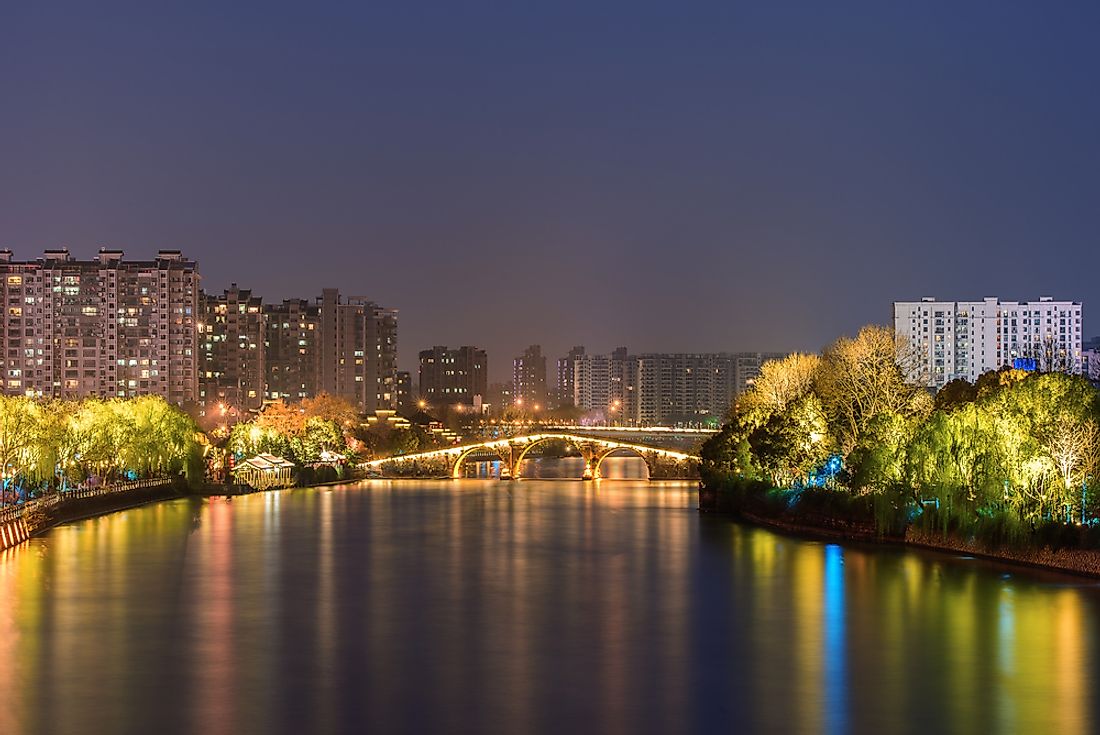Which Is The Longest Canal In The World?

Located in China is the Beijing-Hangzhou Grand Canal, popularly known as the Grand Canal. It is not only the world’s longest artificial river or canal, it is also a tourist destination. The canal starts at Beijing before passing through Tianjin and the Hebel, Shandong, Jiangsu, and Zhejiang provinces to the city of Hangzhou, connecting the Yangtze and Yellow Rivers. In 2014, the Grand Canal was listed as a World Heritage Site by UNESCO during the Conference on World Heritage.
History of the Grand Canal
The Grand Canal’s oldest sections trace their history to the 5th century BCE. However, several sections of the canal were first linked together between 581 and 618 CE during the Sui dynasty. Both the Ming and Yuan dynasties significantly reconstructed the canal to alter its route so that it could supply Beijing, which was their capital. Together with its present-day course, 14 centuries of constructing the Grand Canal have left it with several historical sections. While some of the sections have disappeared, there are others that still exist but are partially extant. Other sections form the basis of the present day-canal. Some of the most significant sections include the Yilou Canal, Jizhou Canal, Huitong Canal, Jia Canal, Duke Huan’s Conduit, and the Nanyang New Canal.
Length of the World's Longest Canal
The Grand Canal’s total length is approximately 1,104 miles while its greatest height is at 138 feet at the summit of the Shandong Mountains. Following the invention of the pound lock in the 10th century, Chinese canals never had an issue with reaching higher elevations. The pound lock was constructed by Qiao Weiyue an engineer and government official between 960 and 1279 during the Song dynasty. Many people have admired the Beijing-Hangzhou Grand Canal throughout its history including the Persian historian Rashid al-Din, the Italian missionary Matteo Ricci, the Japanese monk Ennin, and the Korean official Choe Bu.
Impact of the Grand Canal
Historically, the constant flooding of the Yellow River did not only threaten the functioning of the Grand Canal but also its safety. The Yellow River’s high dikes during wartime were sometimes intentionally broken so that it would flood enemy troops that were advancing the territory. As a result of these periodic floods, the region experienced prolonged economic hardships and disaster. In spite of temporary disuse and desolation periods, the canal has fostered a native and growing economic market in the urban centers of China since the Sui period. The Grand Canal has also facilitated faster trading which in turn has helped improve the economy of China. The canal’s southern part remains in great use until today.
Modern-Day Canal and Its Uses
At present, only the Grand Canal’s section running from Hangzhou to Jining is navigable. The canal’s course is currently divided into several sections, from north to south. The Grand Canal has mainly been used for transportation from the Tang dynasty to the Qing dynasty since it served as a vital link between the southern and northern regions of China. It was mainly used for transporting grain to Beijing, but the route was also used for shipping other commodities. Over time, the corridor along the Grand Canal became a significant economic belt. According to records, during the canal’s peak years, over 8,000 boats shipped about 360,000 metric ton of grain annually. The canal has also enhanced political integration and cultural exchange within the region. Currently, the Grand Canal is primarily used for the transportation of a variety of bulk goods including coal, bricks, sand, gravel, and diesel.











